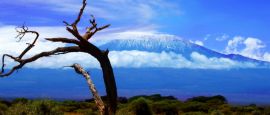Tanzania History, Language and Culture
History of Tanzania
There are over 120 ethnic groups on the Tanzanian mainland, most of whom migrated from other parts of Africa over the millennia, whilst on the coast, the Swahili people originated from an eclectic mix of traders – Arabic, Persian and Chinese among others – who arrived from as early as the 8th century.
The first European arrival was the Portuguese explorer, Vasco da Gama, who visited the coast in the late-15th century, after which most of the littoral region came under Portuguese control. The Portuguese also controlled Zanzibar until 1699, when they were ousted from the island by Omani Arabs.
In the late-19th century, along with Rwanda and Burundi, Tanganyika was absorbed into the colony of German East Africa until the end of WWI. Then, following the German defeat, it was administered by the British under successive League of Nations and United Nations mandates.
Tanganyika became independent in 1961, under charismatic socialist leader, Julius Nyerere, who was President until 1985. In 1964, Tanganyika joined with Zanzibar and became Tanzania. Since independence, Chama Cha Mapinduzi (CCM), has remained the ruling party.
Tanzania proved itself an active player in regional politics, by giving support to anti-apartheid movements in South Africa, and it intervened militarily in Uganda in 1979, to overthrow the Amin regime. In 1985, Nyerere retired and was replaced by Ali Hassan Mwinyi, who introduced market forces into the economy and on the political front, amendments to the constitution allowing for the introduction of a multiparty system.
Nevertheless, the CCM comfortably won the 1995 elections, when Benjamin Mkapa became president. In August 1998, Tanzania was the scene of a major terrorist incident when the US embassy in Dar es Salaam was bombed. October 1999 was marked by the death of ex-president Julius Nyerere.
Mkapa won a further term of office in 2000 amid vote rigging and intimidation allegations, particularly on Zanzibar. Again in the 2005 election, Zanzibar experienced tension and some violence when the CCM candidate Jakaya Kikwete was declared the winner, a result disputed by the Civic United Front (CUF), which claimed they’d won the majority of votes. However, negotiations between the two parties in 2009 ushered in peaceful elections in 2010 following a power-sharing agreement.
In 2015, John Magufuli became Tanzania’s new president and has been praised for his no-nonsense approach and zero tolerance towards corruption and frivolous government expenditure.
Did you know?
• Tanzania gained world fame when the celebrated American author Ernest Hemingway wrote about his time in the country in ‘The Green Hills of Africa’.
• Some of the earliest remains of humans were recovered in Olduvai Gorge in Tanzania.
• Tanzania shares a national anthem with South Africa and Zimbabwe.
Language in Tanzania
Kiswahili and English are the official languages. The terms Swahili and Kiswahili are used interchangeably, though the term Swahili normally refers to the people while Kiswahili refers to the language. Originating along the coast, Kiswahili is a Bantu language with many words derived from Arabic. Other African languages such as Bantu and those of Nilo-Hamitic and Khoisan origin are also spoken in more remote regions.




 You know where
You know where